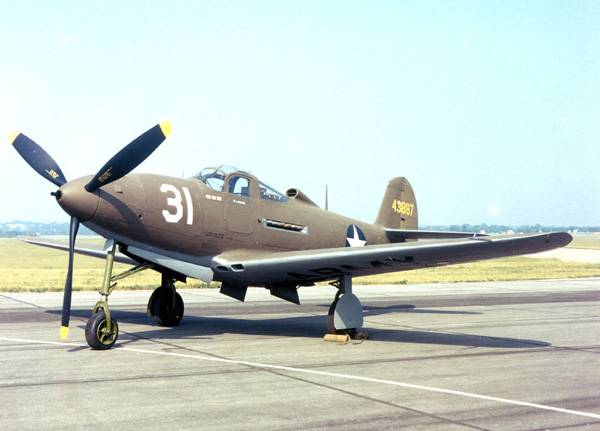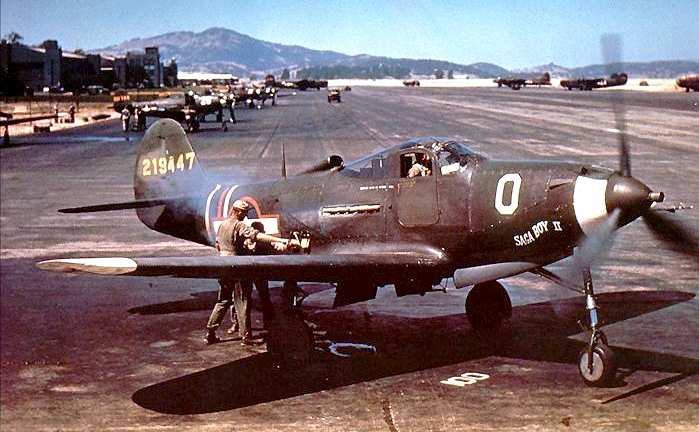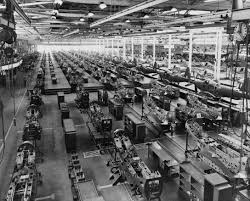Xenophon
Gone and forgotten
American fighter-bomber
The Bell P-39 Airacobra was one of a group of fighters that pioneered the tricycle undercarriage. Another distinctive feature was the position of its engine, which was carried in an unorthodox siting beneath and behind the pilot's seat. The propeller was driven through an extension shaft that was linked to a gearbox in the fighter's nose. Although an American product, Airacobras were first used operationally by the RAF, in October 1941. The prototype had appeared in 1939, but to begin with there were no American orders. The French were interested, however, and after the fall of France their contract was taken over by the British.
The RAF wanted to use the P-39 in a ground-attack role, but after a short proving period the planes were withdrawn from service. Then, as the United States entered the war, the remainder of the Bell factory's initial output was taken up by the USAAF for training duties.
Once it had established itself, the P-39 served throughout the war in various modified states, the model numbers reaching as far as 'Q' by 1944; by July of that year the total production figure had reached 9,558. Of these, some 5,000 were supplied to Russia under the Lend-Lease agreement.
Following the Torch landings of late-1942, the P-39 made its mark as a ground-attack or recce machine specializing in 'rhubarb' missions that involved strafing or reconnoitring enemy positions at low altitude.
When the fighting began in Sicily and Italy, the P-39s' limited range proved something of a problem. Although the official range figure for the Q model is set at 675 miles, in practice it was pegged much lower at 150 miles there and 150 back plus 10 minutes' combat time; these figures also allowed for use of an auxiliary tank.
In their favour, however, it could be said that the P-39s were stoutly resistant to AA fire, and the USAAF continued to use them profitably on convoy escort and patrol duties.
P-39 details Q model:
Length: 30ft 2 ins.
Span: 34ft 0 ins.
Combat weight: 8,300 Ib.
Crew: 1.
Top speed: 385 mph.
Ceiling: 35,000ft.
Range: 675 miles.
Armament: 1 x 37-mm cannon and 4 MGs: 1 x 500 Ib bomb optional.
The Bell P-39 Airacobra was one of a group of fighters that pioneered the tricycle undercarriage. Another distinctive feature was the position of its engine, which was carried in an unorthodox siting beneath and behind the pilot's seat. The propeller was driven through an extension shaft that was linked to a gearbox in the fighter's nose. Although an American product, Airacobras were first used operationally by the RAF, in October 1941. The prototype had appeared in 1939, but to begin with there were no American orders. The French were interested, however, and after the fall of France their contract was taken over by the British.
The RAF wanted to use the P-39 in a ground-attack role, but after a short proving period the planes were withdrawn from service. Then, as the United States entered the war, the remainder of the Bell factory's initial output was taken up by the USAAF for training duties.
Once it had established itself, the P-39 served throughout the war in various modified states, the model numbers reaching as far as 'Q' by 1944; by July of that year the total production figure had reached 9,558. Of these, some 5,000 were supplied to Russia under the Lend-Lease agreement.
Following the Torch landings of late-1942, the P-39 made its mark as a ground-attack or recce machine specializing in 'rhubarb' missions that involved strafing or reconnoitring enemy positions at low altitude.
When the fighting began in Sicily and Italy, the P-39s' limited range proved something of a problem. Although the official range figure for the Q model is set at 675 miles, in practice it was pegged much lower at 150 miles there and 150 back plus 10 minutes' combat time; these figures also allowed for use of an auxiliary tank.
In their favour, however, it could be said that the P-39s were stoutly resistant to AA fire, and the USAAF continued to use them profitably on convoy escort and patrol duties.
P-39 details Q model:
Length: 30ft 2 ins.
Span: 34ft 0 ins.
Combat weight: 8,300 Ib.
Crew: 1.
Top speed: 385 mph.
Ceiling: 35,000ft.
Range: 675 miles.
Armament: 1 x 37-mm cannon and 4 MGs: 1 x 500 Ib bomb optional.






